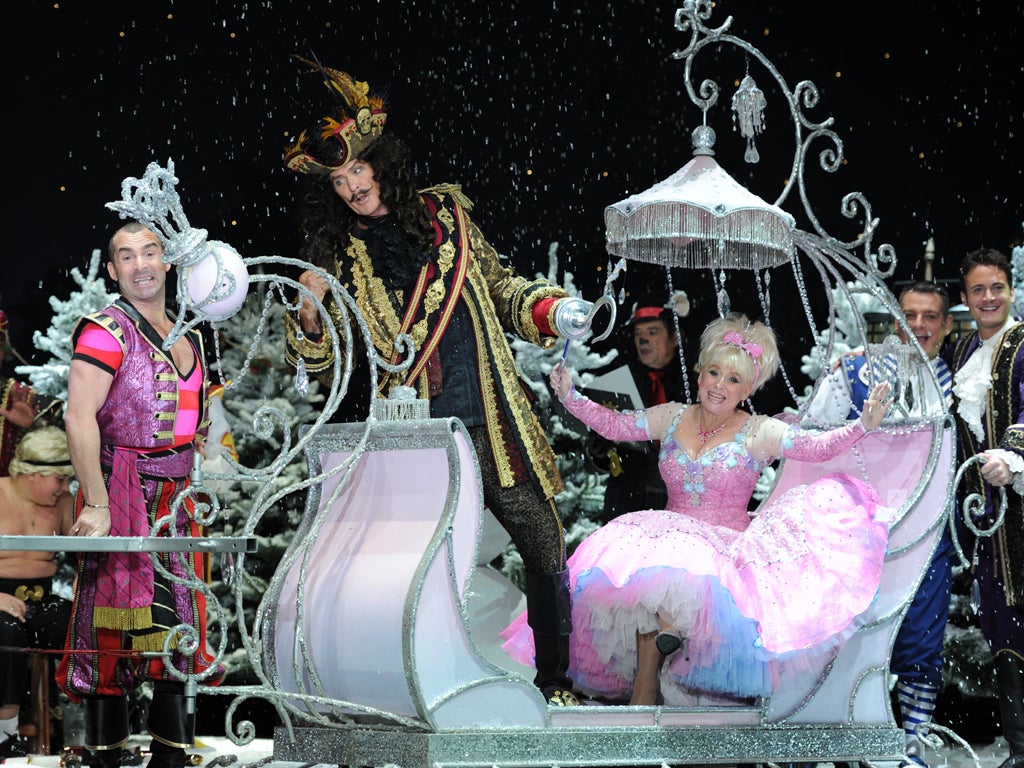Panto dames are in decline, and it’s all down to the spirit of the age
Young actresses playing Dick Whittington no longer seems quite right

Just occasionally, in a world groaning with dubious surveys purporting to prove this or that, some genuinely useful statistics emerge. This week, for example, that scandalously under-used resource the National Database of Panto Performances, or NDPP, revealed how traditional Christmas entertainment has changed in the past couple of years.
The usual moaners have complained about political correctness – “The PC brigade is killing off the panto dame,” wailed one headline – but the survey tells a more nuanced and interesting story than the decline of Widow Twankey. In fact, if you want to know what is really happening beneath the surface of our culture, it may not be a bad idea to pay a visit to a local panto.
You may well find yourself watching Jack and the Beanstalk, of which there are 39 productions this year, Cinderella (38) or Peter Pan (15), each one an uplifting story of human achievement against the odds. Old favourites like Puss in Boots or Mother Goose are out of favour as are panto animals, known in the trade as “skin parts”.
Evil, meanwhile, has become far too problematic to be a matter of silly faces and scary make-up. The fact that some of the family favourites who might have made guest appearances in pantomimes of the past are now being revealed to have been villains, trading sleazily on their popularity, makes the idea of a comical stage baddie altogether less amusing.
Even more unsettling, to judge by the NDPP figures, is the “principal boy” role, in which a young actress plays Dick Whittington, Robin Hood or Cinderella’s prince, striding around in thigh-length boots and tights, speaking in a deep voice and occasionally slapping her own shapely thigh in jest. There was a time when parents could get harmless pleasure out of these sexually ambiguous performances while their children enjoyed the fantasy. Now, in our more knowing times, everyone is aware that there is something not quite right about their being part of children’s entertainment.
The other famous type of festive gender confusion, the pantomime dame, is even less acceptable. The problem is not so much that the sight of a man playing the role of a peculiarly grotesque woman is discomfiting to modern audiences as the fact that, rather reassuringly, young audiences are unlikely to see the joke. At a time when one cross-dresser is a revered artist who has delivered the best Reith Lectures in years and another is preparing to run for election as Mayor of London, the idea that a man in a skirt is funny clearly belongs to the past.
Pantomime, since it first arrived on these shores in the late 18th century, has shown a capacity for adapting itself to the culture of which it has been part. It was the Victorians who made a slapstick theatrical show part of Christmas, no doubt adding a hefty dose of sentimentality. More recently, the 1970s saw panto become smuttier and, in the 21st century, more celebrity-centric.
Today it features heart-warming tales of human virtue. Tricky areas – notably, hairy-legged dames and pert, shapely princes – are carefully avoided. In fact, pantomime is considerably tamer than the one which is taking place beyond the theatre doors.
www.terenceblacker.com

Join our commenting forum
Join thought-provoking conversations, follow other Independent readers and see their replies